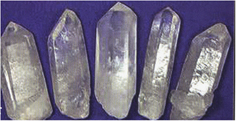
Dillehay’s book is an outstanding contribution to Andean archaeology. Its greatest strength is the incorporation of multidisciplinary studies carried out through both fieldwork and laboratory analyses in an attempt to understand how the site of Huaca Prieta was formed over several millennia. The 15 chapters and 19 appendices demonstrate how this combination of inter- and multi-disciplinary research helps to address broader questions related to the origins of social complexity during the early stages of human history. The research, led by Tom Dillehay and the late Duccio Bonavia (1935–2012), is a splendid continuation of the pioneering work carried out 73 years ago by the legendary Junius Bird at the American Museum of Natural History (Bird et al. Reference Bird, Hyslop and Dimitrijevic1985).
The book begins by contextualising the research carried out at Huaca Prieta, the nearby Paredones mound and surrounding localities. Theoretical considerations centre on the ontology of the human activities carried out at these sites (Chapters 1–2). For Dillehay, the major concern of Preceramic populations like the one settled around Huaca Prieta was “the maintenance of cohesion and the reproduction of individual communities and their kinship and household group identities”, and, in this regard, “mound building was essential for the creation of a sense of community among dispersed foragers who were incorporating crops and needing a permanent place to integrate” (Dillehay, pp. 16–17). This view is radically different from current views of mound building during the early stages of social complexity in the Central Andean region (compare with Haas & Creamer Reference Haas and Creamer2006; Shady Reference Shady2009). Dillehay posits that the social process or ‘social construction’ of monumental architecture is a necessary result of human interaction, rather than the interest of corporate groups or elites imposing their monumental desires over the population. In any case, it might be that the Huaca Prieta mound construction during phase IV is an anomaly in comparison to sites in the Norte Chico region, such as that at Caral, which had a rather different trajectory. Dillehay’s research suggests that Huaca Prieta arose as the outcome of multiple short-term rituals carried out by individuals, extended families and/or different communities that were congregated in the same general locality for millennia.
This volume additionally contributes a new proposal for a chronological model of Huaca Prieta, based on more than 100 radiocarbon dates from cultural contexts (more dating information is contributed from geological strata, Chapters 5–6). Interpretation of these dates is done in conjunction with consideration of the environmental history, obtained through the study of Holocene sediments deposited in the Chicama Valley over the past 8000 years.
The incorporation of studies of faunal and plant remains (Chapters 9–10) represents a major effort on behalf of the authors to characterise and contextualise the economy, subsistence and food-procurement strategies of the people related to Huaca Prieta, Paredones and the domestic units around them. Although the authors of these chapters are cautious in their interpretations due to statistical issues, the multiple tables are a useful tool for comparative perspectives. The fact that sharks were important in the local diet since the first stages at Huaca Prieta supports previous results obtained at other sites such as Gramalote in the Moche Valley, which subsisted mainly on shark meat during the early part of the Initial Period (1500–1200 cal BC; Prieto Reference Prieto2015). For Vasquez and his colleagues, the sharks from Huaca Prieta were captured in brackish and saltwater estuaries connected to the sea (see pp. 201, 207, 363, 365 and cf. p. 268). For me, sharks were captured in the sea during the breeding and mating season in the austral summer using reed boats (Prieto Reference Prieto2015: 621 & 625). Although this information is not quoted by Vasquez et al. (see pp. 208, 268, 363), it is interesting that they have reached the same conclusion as I did in my doctoral dissertation in 2015. I would like to think, based on current evidence, that the coasts of the Moche and Chicama Valleys were infested with sharks between 6500–3000 BP. Despite this minor detail, the main point here is the importance of shark fisheries for more than 3500 years in this part of the Peruvian North Coast. This reinforces the hypothesis that early foragers intended to maximise their energy to obtain large returns of meat protein for their daily subsistence. I also wonder whether the fishermen from Huaca Prieta used dried shark meat as a commodity for exchange, as was proposed for Gramalote, perhaps for the non-local plant products such as the chili peppers found in the rich organic deposits of Huaca Prieta (masterfully studied by Katherine L. Choiu) and Paredones (Bonavia et al.).
Finally, the extraordinary chapter on ‘Twined and Woven Artifacts’ (Chapter 12) written by J. Splitstoser must be acknowledged. When one reads the descriptions and conclusions made by Junius Bird on the materials discussed, it is hard to believe that there is anything else to be said or discovered. Splitstoser advances the analysis of textiles in the Andean region, providing a more complex consideration of the construction of the fabric itself. As a researcher investigating ancient maritime communities, I found the description and further interpretations of the netting techniques fascinating. Furthermore, Splitstoser discusses the possible existence of two distinct contemporaneous fabric traditions—plain weave and weft twining—and, after careful study of the threads and fabric construction, suggests that non-specialist individuals made those sophisticated early textiles.
Dillehay’s volume is not only a great tribute to Junius Bird and Duccio Bonavia, but also an excellent example of how modern archaeological research should be conducted and oriented. This volume is a foundational landmark, and can be used to teach students both at undergraduate and graduate levels to provide guidance for how to conduct and publish future archaeological research.


